Have you ever wondered how elite athletes train and fuel to perform their best? Here’s a look into the training and sports nutrition strategies taught at an elite NHL style hockey camp.
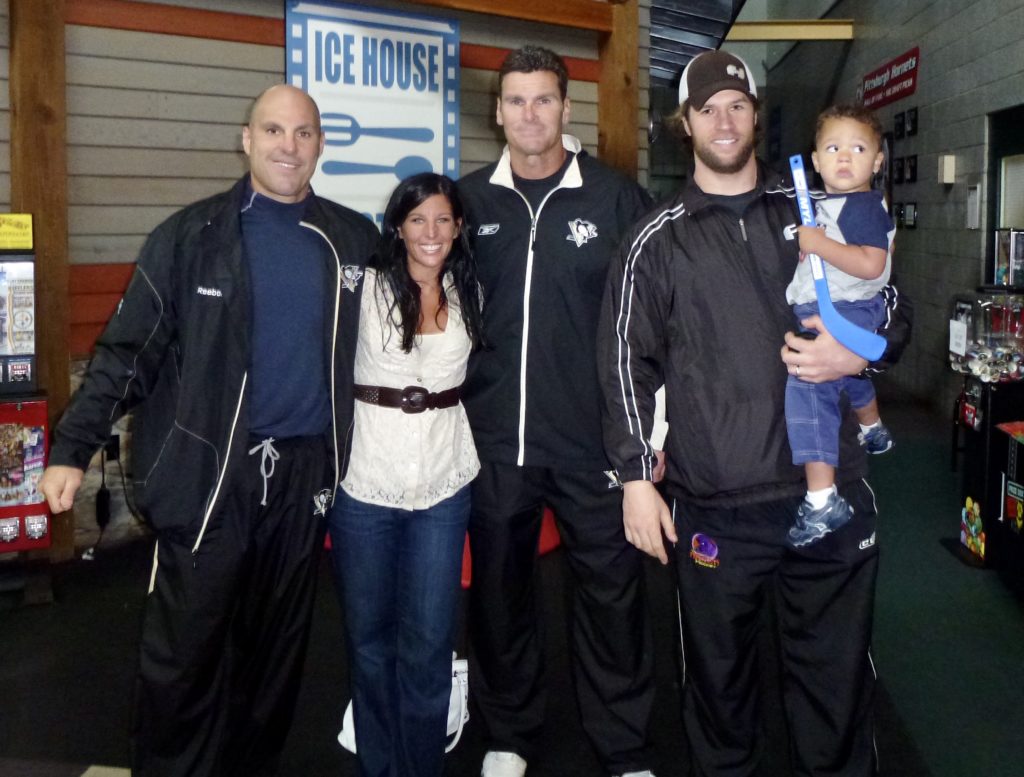
Over the summer months, many athletes that participate in fall and winter sports, attend summer camps. These camps are an opportunity to work on key skills needed to perform well in their sport and learn new strategies and techniques not focused on during regular session practice. Learning sports nutrition strategies is part of that.
Because I participate in a lot of these camps, I get asked a lot of questions about them. I’m asked about how I feed the athletes and what nutrition advice I was sharing. Others are interested in the hockey training and wanted details on how the coaches and I all work together to conduct an all-inclusive camp.
I decided to share some of that information in a post. Here’s some fueling strategies that occurred at our elite NHL style hockey camp.
Elite NHL Style Hockey Camp In Pittsburgh
One of my favorite youth sports camps is in my hometown of Pittsburgh. Jeremy Hoy, a strength and conditioning coach who works with youth athletes, organizes the elite NHL style hockey camp as a way for local hockey players to participate in pro-style practices, both on and off the ice. The camp is all-inclusive when it comes to hockey training. They learned on-ice drills, speed skating strategies, off-ice strength and condition techniques, and how to fuel for performance.
I’m responsible for teaching the sports nutrition strategies.
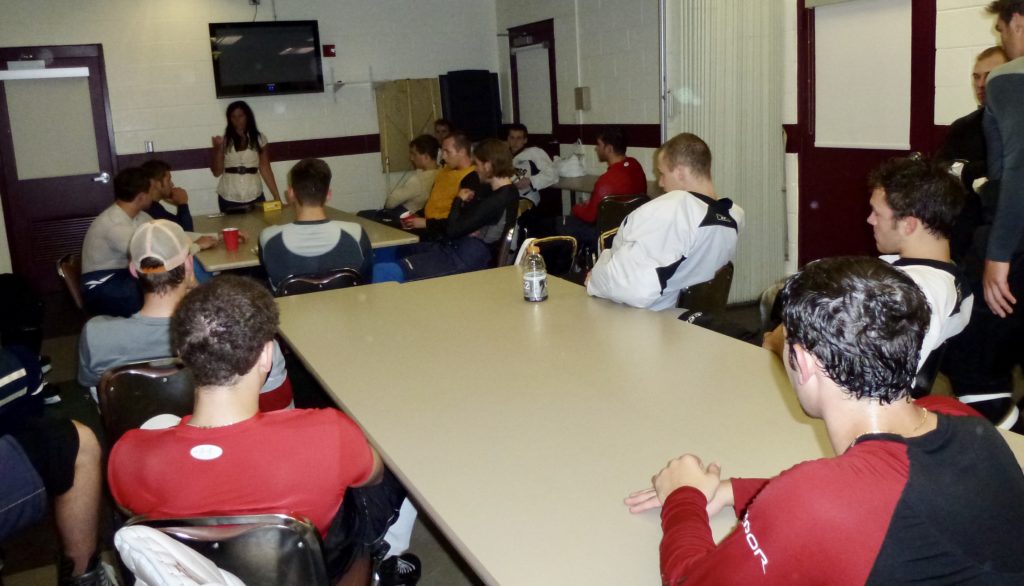
What Sports Nutrition Strategies Are Important For Athletes?
Included in the elite NHL style hockey camp is a block on sports nutrition. The instruction is set up classroom style, with the athletes listening to my presentation, then having the ability to ask me any questions they want. I also schedule one-on-one time with athletes, as needed, to discuss individual concerns and fueling/hydration needs.
I review many of the common sports nutrition strategies with the athletes, including game day fueling, eating the night before an event, eating for back-to-back competition and training, and how to eat on rest days. We also discuss gaining weight in a healthy way, changing body composition and dietary supplements. It’s an overview of each topic, with handouts that provided more specific strategies.
My lesson provids practical ways for the athletes to fuel and hydrate, and shares specific steps that they can put into practice immediately. I know that once they optimized their fueling and hydration, they will see and feel improvements in their performance.
The #1 Most Important Fueling Message Shared
Sports nutrition plays a huge role in sports performance. I don’t let the athletes leave until they all believe that to be true. Many athletes associate sports nutrition with the foods and fluids they eat before, during and after a workout. But, sports nutrition is way more than that.
Recovering with the perfect carbohydrate and protein smoothie isn’t going to do much if you’ve been eating a poorly balanced diet day after day. In fact, it’s the other way around. The foods and fluids that an athlete eats each day, day-after-day, that has the biggest impact on their athletic performance.
If you eat a performance diet most of the time, missing a recovery meal won’t have much impact at all. That’s why an athletes day-to-day diet is critical to maintaining a healthy body, build muscle and improve performance.
Eat Breakfast Before Hockey Camp
The first block of hockey camp is on-ice training. That athletes needed to arrive well-fueled, well hydrated and ready to hit the ice. That’s why the first strategy I stress is to eat breakfast.
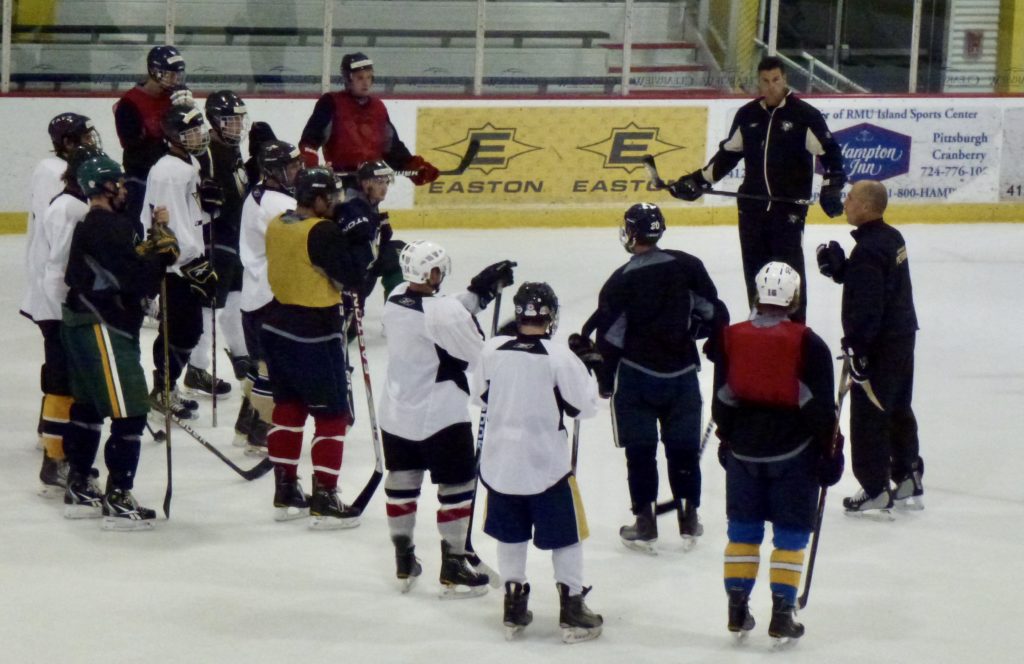
Most athletes are eager to learn what to eat before, during and after exercise, but they don’t always think of breakfast as a pre-workout meal. It is, and an important one at that.
If you’ve ever seen NHL players, you know they are big guys. The athletes at this camp are technically considered youth athletes, but they are anything but small. A piece of toast with peanut butter wasn’t even close to enough fuel to support this training camp. They need a big, balanced breakfast that supplied the right balance of nutrients.
Camp starts early, so the athletes were instructed to eat a carbohydrate rich breakfast to fuel their intense on-ice training. They were also told to include a moderate amount of protein and fat – but not too much. Carbohydrates are necessary to fuel their skating and training, but they needed enough fat in the meal to prevent hunger. Including protein would help to maintain positive muscle protein synthesis during exercise.
I provide education on why starting camp with fueled muscles is important, and shared some examples of what they can eat. If you want to read some specifics on eating for performance, you can check out my post on pre-exercise fueling.
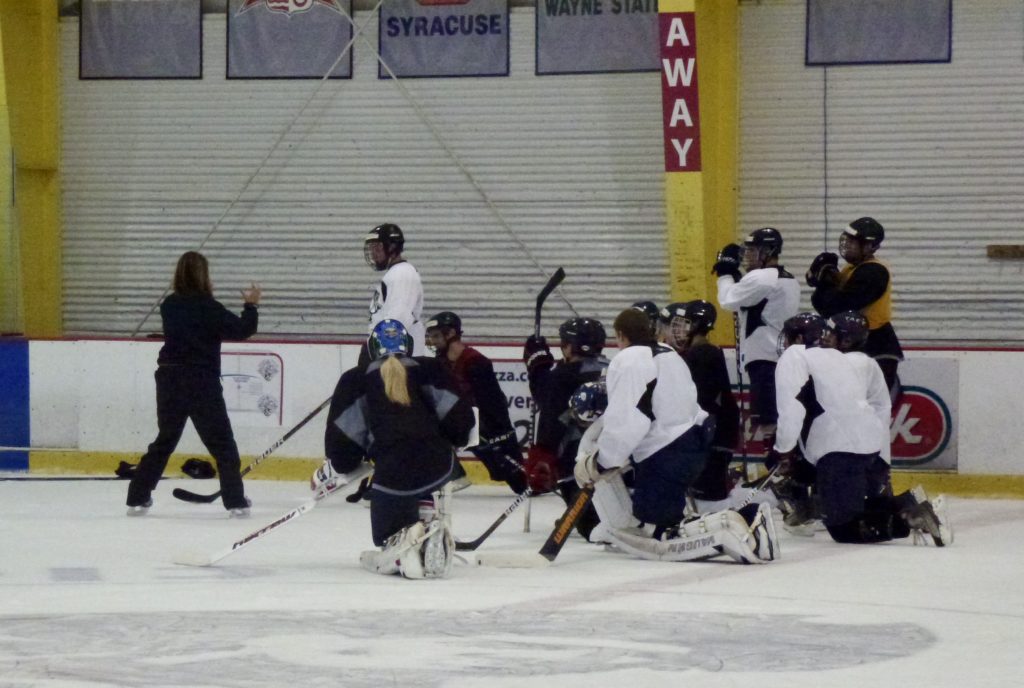
Fueling And Hydrating During Training Drills
Athletes are provided both water and sports drinks during the camp, but during activity, they are told to drink the sports drink. The intensity and duration of the on-ice training requires more than simple fluid replacement. They need the extra fuel from the carbohydrates, as well as the electrolytes, to replace the sodium and any potassium they lost in sweat.
Calculating Sweat Rate And Creating Fluid Schedules
A big benefit of participating in an NHL style hockey camp is getting individualized attention. That includes sports nutrition and hydration recommendations.
Before and after each drill, the players get weighed. That allows me to assess their fluid losses during training. I use this information to calculate their sweat rate, and to create individualized fluid schedules. Some athletes are heavy sweaters, while other are not. Sodium losses can also vary greatly from one athlete to another.
Athletes that know their sweat rate, and follow a fluid schedule, have the best chance at maintaining euhydration, or fluid balance. That’s a huge benefit, since dehydration can have a significantly negative impact on athletic performance.
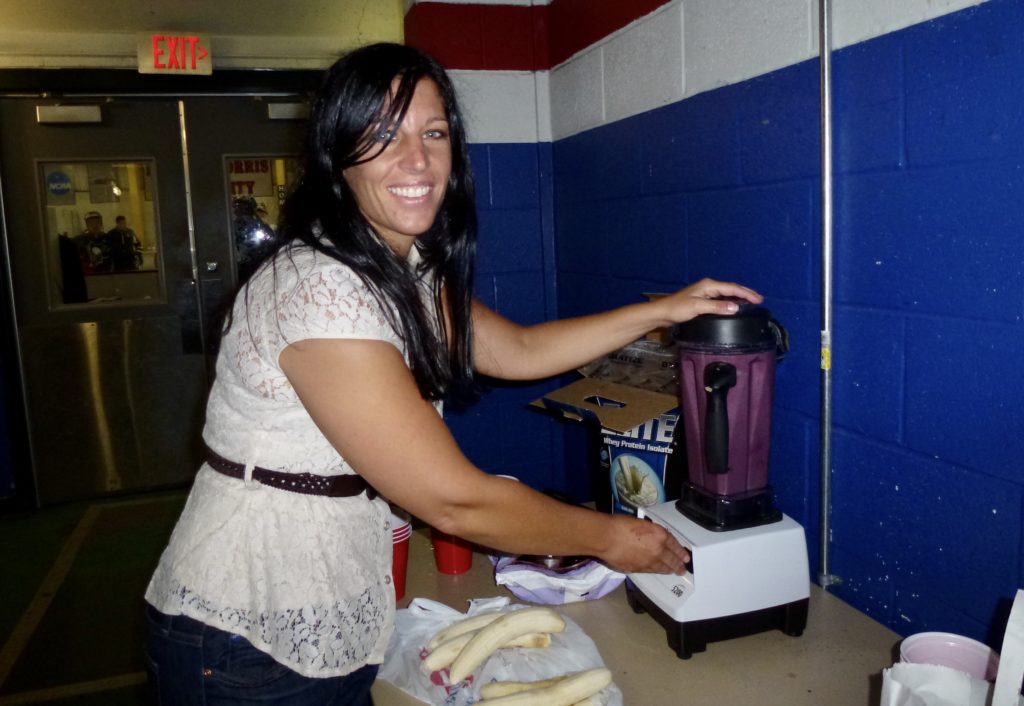
Recovery Nutrition – Post On-Ice Training Smoothies
On-ice training is the first drill of the day, and lasts ~2 hours. The players exit the ice drenched in sweat. No doubt, they had used every calorie they consumed at breakfast, to fuel this high intensity activity. I have a table set up right outside the door, filled with homemade triple berry smoothies. This would be their first recovery meal of the day, but not their last.
There wasn’t anything magical about the smoothie ingredients. In fact, it’s one of the simplest recipes out there. I combined frozen berries, vanilla whey protein powder, skim milk, water and ice. That’s it!
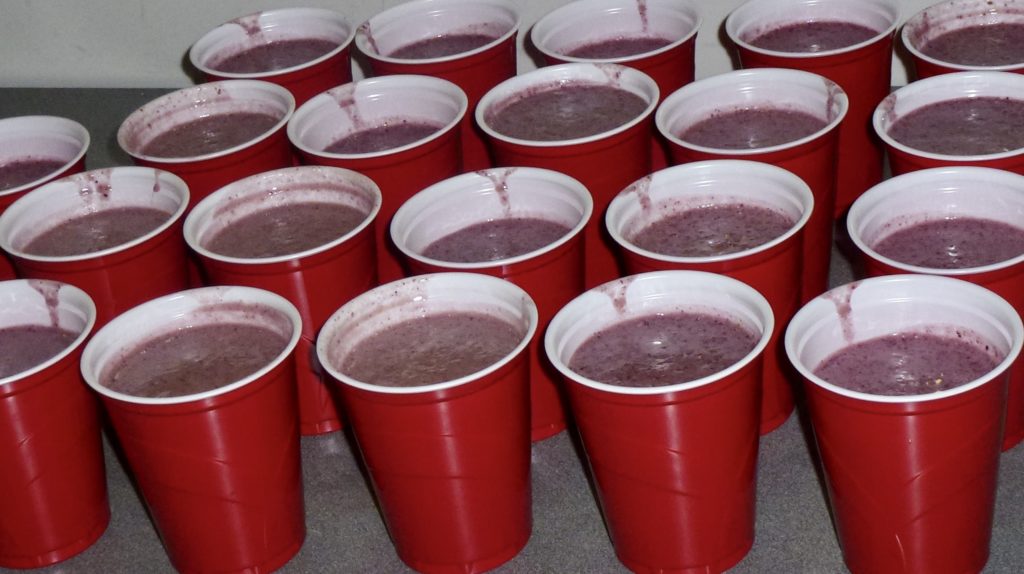
I purchase the ingredients prior to camp, so that I have them ready to go the second the athletes exit the ice. At this camp, I brought three of my blenders from home, and borrowed a few from the coaches. That way, I was able to make multiple smoothies at a time, and no one had to wait.

It’s important to understand that not all smoothies are created equal. The recipe I selected was picked for a reason. The players will have this smoothie immediately after exhaustive exercise, and they only have a 45-minute break before they started off-ice strength and conditioning training. That means, they need a recovery meal that supplies fast absorbing carbohydrates, quick digesting protein, and very little fat. The carbohydrates to refill their muscle glycogen stores, and the protein to support muscle recovery and repair. Consuming some protein at that time, and throughout the day, helps to maintain a positive nitrogen balance throughout training. I made the smoothies fat free, since fat can slow digestion, and the players only had 45 minutes until they started training again.
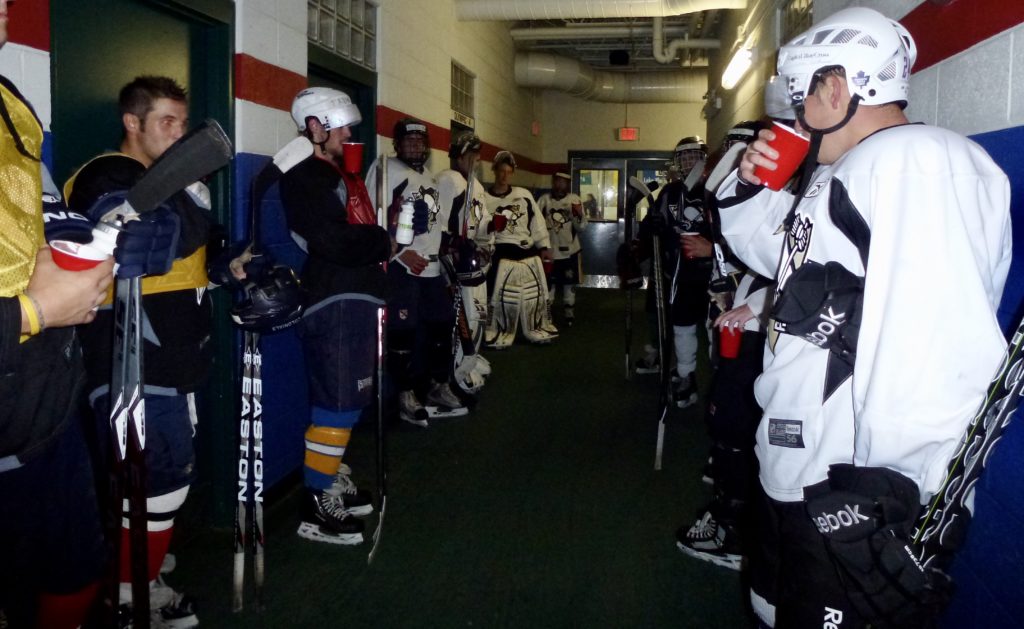
Fueling Strategies During Off-Ice Training
The players drink the the smoothie immediately after on-ice training, then get a 45 minutes break to rest and recover. After that, they head to their next block – strength and conditioning with coach Hoy.
As with on-ice training, the athletes are provided both water and sports drinks during training. Athletes drink whatever they choose, since staying hydrated is less of a concern while strength training, than it is while on the ice.
Recovery Nutrition – After Strength & Conditioning Training Fluids & Snacks
The strength and conditioning block is the last training session on day one. The players are encouraged to start the recovery process immediately after training, with a post-workout snack. This recovery nutrition session is part of camp, so they have to eat and drink prior to leaving for the day.
I put a combination of recovery foods set out for them to eat and drink, including chocolate milk, granola bars, fruit and nut bars, raisins and trail mix.
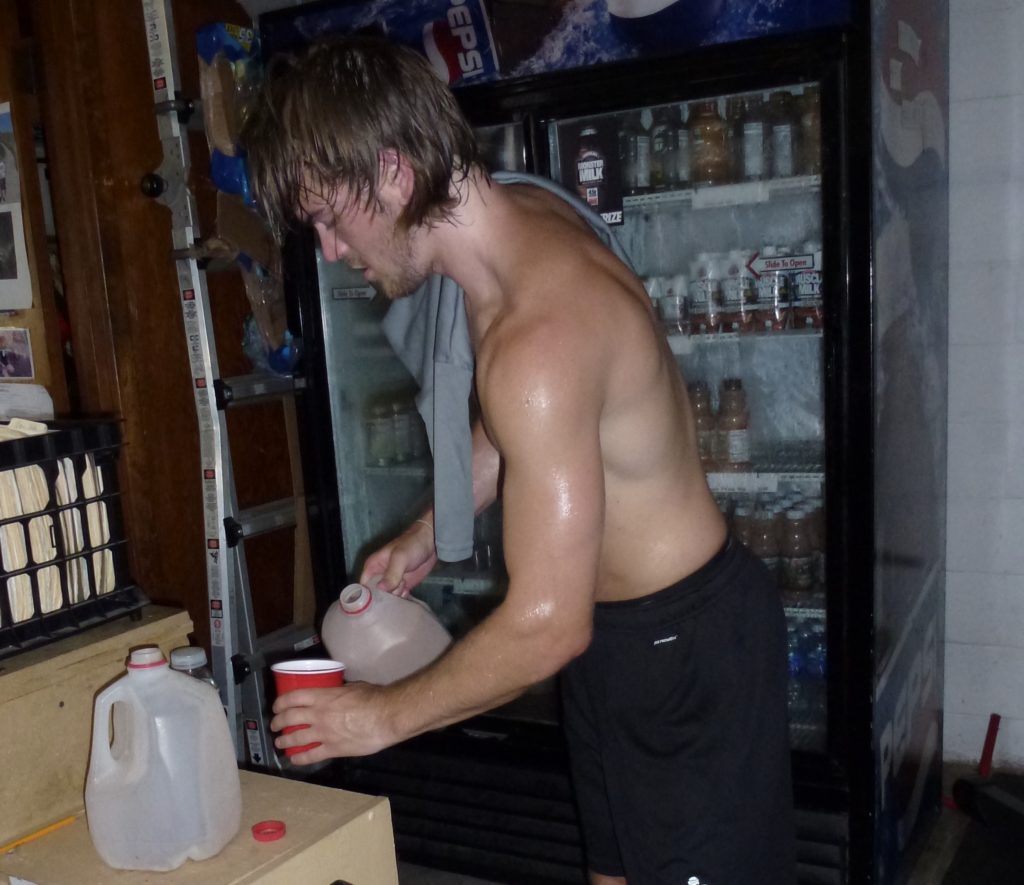
The players are told to eat a balanced, healthy meal within 1-2 hours of leaving camp, and to get plenty of sleep, to help their recovery, and be ready for the next day.
Aside from providing the fuel, my role as a registered sports dietitian is to help the players understand why they need it, teach them what to choose and make sure they actually eat/drink while they are there.
Young athletes need to be taught, that to perform at an elite level, they have to eat like an elite athlete. Superior nutrition equates to better training, which leads to a better athlete.
For more tips on fueling and hydrating hockey players, check out my book, Fueling Young Athletes, or my post that addresses Healthy Hydration During Hockey Practice.
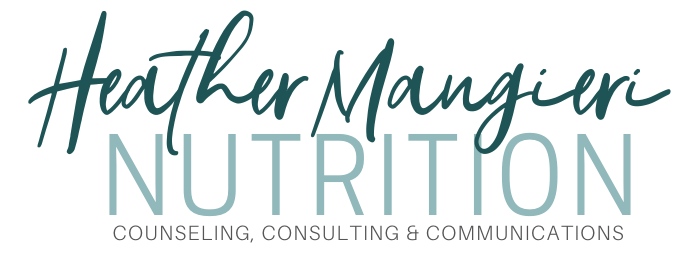
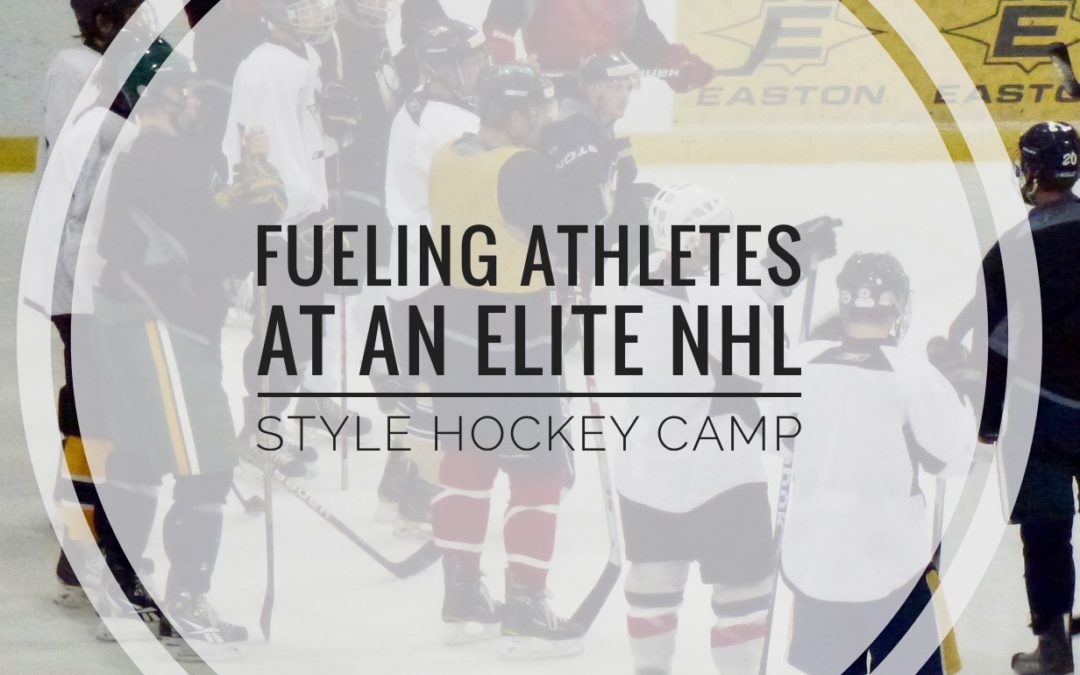
 Hi, I’m Heather – a registered dietitian, busy mom, consultant, adventure junkie and travel addict who has mastered living healthy on the go. My blog is where I share simple recipes and healthy living tips to help and inspire others to live their best life.
Hi, I’m Heather – a registered dietitian, busy mom, consultant, adventure junkie and travel addict who has mastered living healthy on the go. My blog is where I share simple recipes and healthy living tips to help and inspire others to live their best life.